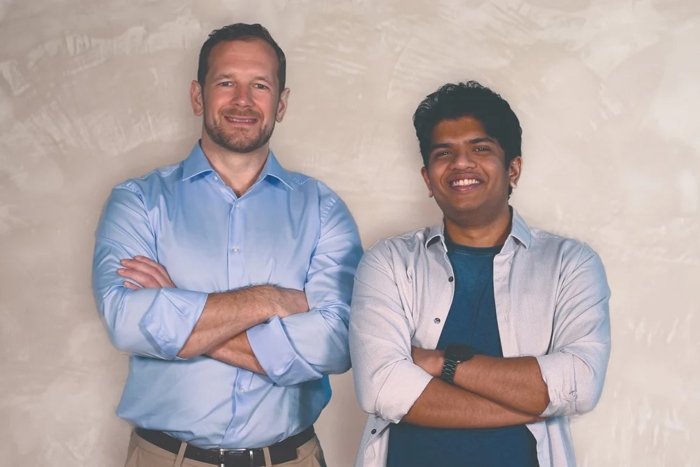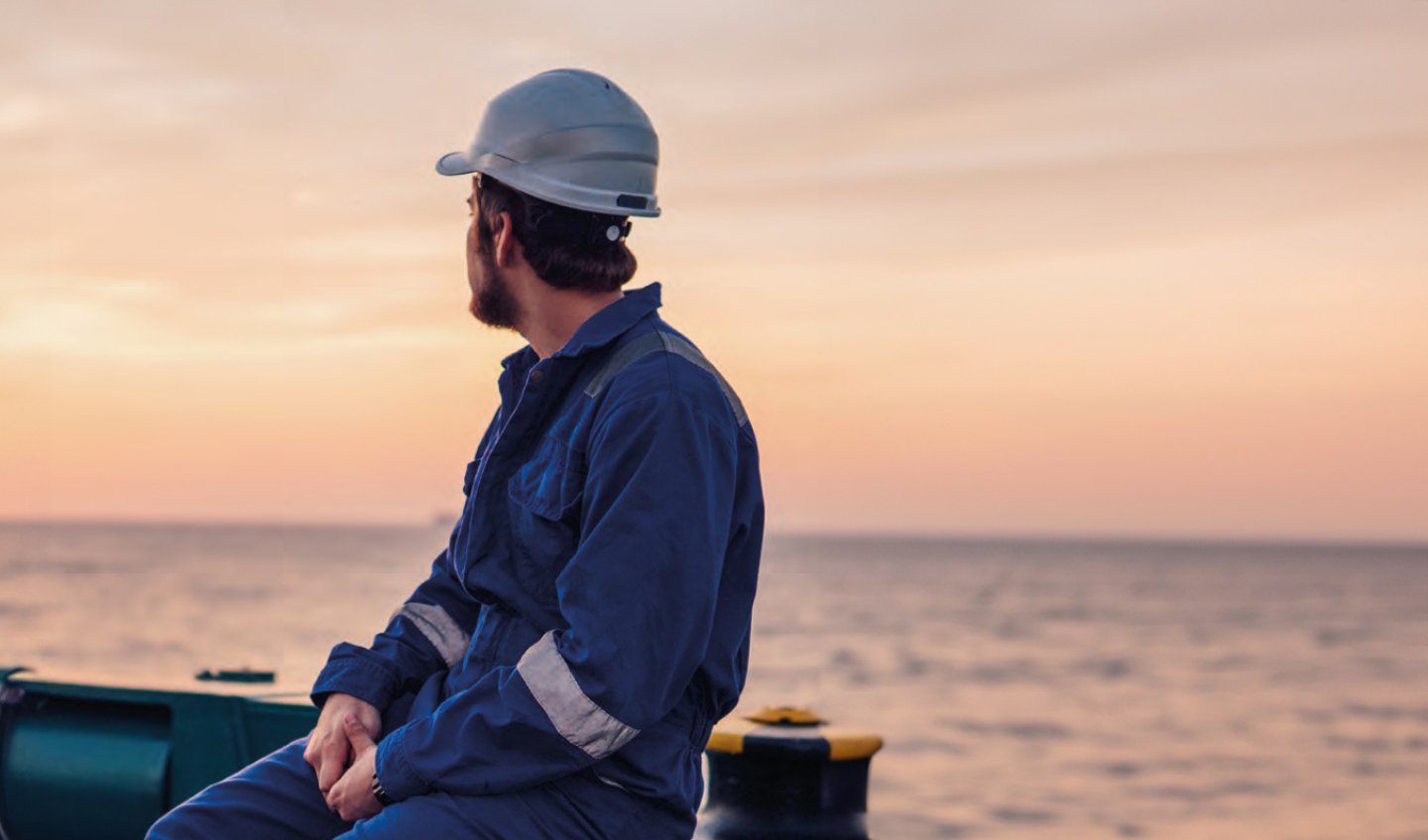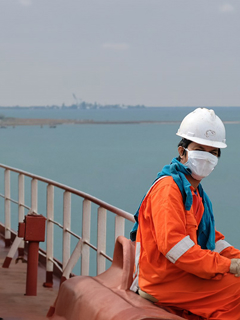When Nick Clarke and Hrishi Olickel set up Greywing in May 2019, the focus of the platform was solely on connecting clients in a security marketplace to maritime security solutions.
However, when the shipping industry started experiencing major repercussions of the coronavirus pandemic, and thousands of seafarers were trapped onboard vessels, unable to travel home, the Greywing team looked to solve this crew change crisis by adding port and flight restrictions data to their platform.
Following rapid development, Greywing was able to process all the information about a vessel, its crew, the nationalities onboard, their home airports, the current route, port restrictions around the world, flight availability, past crew changes and a hundred other variables to answer the question: where can I send my vessel to change crew, with minimal impact to my company?
Greywing CTO, Hrishi Olickel, reflects on this evolution: “It was a tough decision to reposition an established company and the machinery behind it towards focusing on a growing, pressing problem. This wasn’t taken lightly, but we felt this serious crisis could use all hands on deck. There was much uncertainty at the time, but we were sure our efforts were working towards solving a problem that was important to maritime, and the world.”
Greywing implemented a traffic light system to categorise vessels based on their COVID-risk, from data of the ports they have visited. This enabled the production of an accurate risk assessment, which allowed managers to plot a route and immediately see the risk level of future port calls. The platform now holds data from over 100,000 ports. “The true surprise was the rapid pace at which we’ve seen large industry incumbents come to us, ready to contribute to a solution that was still unfinished. We’ve been humbled by the offers of help, and the feedback we’ve received on the product has been invaluable,” added Olickel.
Since then, the team have deployed multiple products to enable crew managers to automate the process of sourcing flights home for on-signers and off-signers, reducing the amount of time it takes to source solutions from hours and sometimes days, to minutes and seconds. To date, Greywing has helped over 25,000 seafarers to travel home.
“We solve one thing – using data from an industry that is resistant to technological change, we turn it into actionable intelligence. Right now, it just happens to be for crew changes,” said Nick Clarke, Greywing CEO. “A number of people have integrated their data with ours to better serve their customers and the seafarers trying to find a way home. ATPI, S5 Agency World, BIMCO have all shown incredible faith and forward thinking in moving ahead. What we have noticed from organisations like these is a bias to act and test the waters of technology, instead of the wait and see approach,” Clarke added.
More recently, the team have also plugged in bunker consumption and time off-hire for any crew change deviations to help managers/charterers identify the most efficient route. The evolution of the platform has required a client-led approach, using technology to solve complex maritime problems centred around risk and humans. Greywing’s client base has steadily grown and they now serve more than 1,000 vessels including top ship management companies Hafnia and OSM Maritime Group.
Greywing has integrated with almost all levels of the shipping industry – from industry bodies like BIMCO and the Singapore Maritime Officers’ Union, travel management companies, port agencies, the list goes on. Olickel believes that the technology that connects these segments can allow the entire industry to be resistant to systemic shocks like the coronavirus pandemic in the future and find new efficiencies. Additionally, in November 2020, Greywing won the Captain’s Table 2020 – an innovation in maritime pitch event – LR’s Hong Kong and Taiwan Client Care Manager, Matt Treadwell, was among the judges.
For further information visit the Greywing website:
Greywing
Who are Greywing?
Nick Clarke, CEO (left) and Hrishi Olickel, CTO (right) met in January 2019 at Entrepreneur First, a start-up incubator focused on matching founders who otherwise might not have met.
Clarke spent four years in the British Royal Marines before founding the maritime security firm Citadel in 2011, which protected commercial shipping, superyachts, and offshore oil and gas projects from piracy in the Indian Ocean and West Africa. Nick ran Citadel for over 10 years and grew it into a multimillion- dollar business. However, he could see that the traditionally opaque maritime security industry would be better served by a digital approach to managing risk that was transparent, auditable and evidence-based. Standards that could only be met on a digital platform guided by data.
Olickel has worked in technology for 10 years, split between consumer-centric and deep-tech industries around South East Asia, with time spent in electronics, finance, insur-tech and academia. He has worked with the Singapore Exchange, Venture Capital firms in Singapore, National Geographic, and one of the largest insurance brokers in India to name a few. He has also published three papers in Computer Security and Human Computer Interaction, as well as co-authoring a patent in thermal-technology fire detection. He has built data platforms that served over 100,000 users and leads the technology side of Greywing.

Where do you see the digitalisation of the maritime industry adding the most value?
Olickel: We believe digitalisation can – like it has for other industries – turn maritime jobs into knowledge professions, by automating away things that computers are good at. The relationship-based nature of maritime has advantages, however at times it can bring complexities – but we believe individuals can function 1000x with technology serving as a force multiplier.
Clarke: It is hard to say where the value will be added first, but we can expect that everything about the shipping industry will change. If you talk to the largest organisations about their planning around innovation, they take anywhere from six months to a year to decide how they will implement a solution. A technology company will have worked through 15-30 different iterations within that same time period. Which do you think will evolve faster, an organisation with central planning making a decision once or twice a year, or an organisation making a decision and implementing it every 2-4 weeks?
What advice do you have for anyone looking to enter the maritime technology space?
Olickel: My advice, from a CTO’s perspective, would be to build products for the marginal user, and focus on products that are data-aware – that understand the information they process. Technology companies often build fast-moving products that are built for the youngest and most technical of users and fail to find adoption. The true challenge for us has been to build intuitive systems that abstract away complex jobs without making themselves feel complex.







